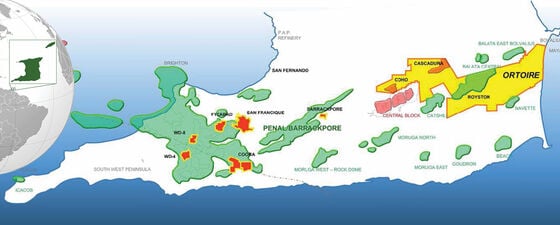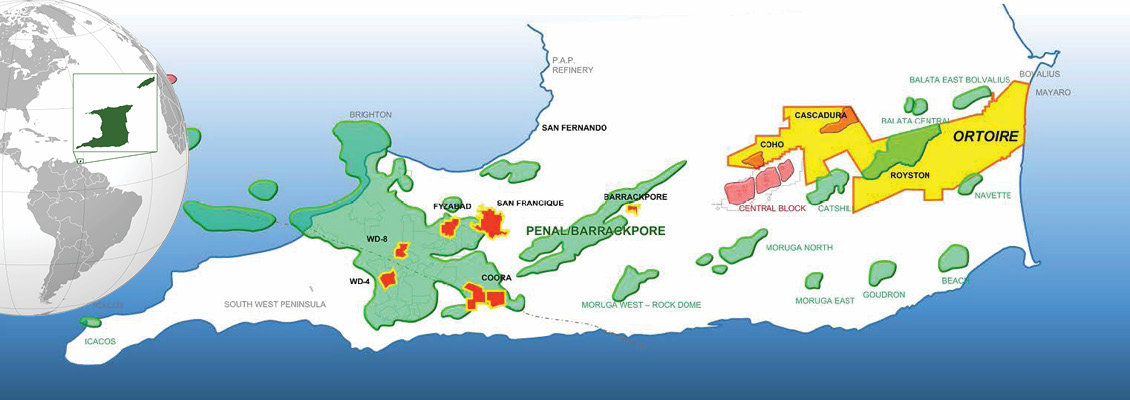The prolific oil province offshore Guyana continues to charge ahead, with ExxonMobil announcing several more discoveries taking discovered recoverable resource for the Stabroek Block to over 10 billion oil-equivalent barrels since the Liza-1 discovery in 2015. Success has continued in Guyana into 2022 with CGX Energy announcing the Kawa-1 well as a hydrocarbon discovery, in the northern part of the Corentyne Block. Kawa-1 is a deep well reaching a total depth of 6,578m. It is located close to the maritime boundary with Suriname and adjacent to APA Corporation’s (Apache) Block 58 where the play fairway extends to the south-east.
One of the discoveries made in the region which has stayed below the radar, largely because of the bigger and higher profile discoveries made elsewhere, is the Touchstone Exploration, Royston-1 exploration well, in the Ortoire Block on the eastern side of Trinidad. The Calgary-based company has had an impressive run of successes in this block along with 20% partner, Heritage Petroleum Company. Its latest well, Royston-1, confirmed a light oil discovery in the lowermost section of the well, which is understood to represent a new zone not encountered in any of the other regional offsetting wells.
Touchstone announced that Royston-1 encountered an intermediate sheet of the Miocene Herrera Formation and produced 1,786 barrels of total fluid at an average flow rate of 705 bbls/day. Interestingly, Royston-1 was targeting a deep gas prospect that an offset well, originally drilled in the 1960s, had detected gas in, but remained untested. Long-term testing of Royston-1 is planned with results due in the coming months. Touchstone is planning two additional wells, from the existing Royston-1 surface location, to target the Royston Deep Prospect and the Cretaceous Kraken Prospect. Kraken will have been de-risked with the deeper oil discovery at Royston-1.
Several countries in the region are either planning licensing rounds in 2022 or have rounds in progress. These include Argentina, Barbados, Brazil, Colombia. Cuba, Dominican Republic, Ecuador, Guyana, Mexico, Peru, Suriname, Trinidad and Tobago, and Uruguay. Some of these will include recycled acreage from previous bid rounds when lower energy prices made them look less attractive.
On the deal side, Brazil has seen almost 50% of the transaction activity in the region followed by Argentina with 15% and Colombia with 10% according to data from the Moyes database. The large number of deals concluded in Brazil has been due to ongoing Petrobras sales of onshore fields as they focus their resources on the ultra-deepwater. Buyers include PetroReconcavo SA (Remanso Cluster with 12 fields), Carmo Energy (Carmópolis Cluster with 11 fields and infrastructure) and Karavan SPE Cricaré (Cricaré Cluster with 27 fields).






